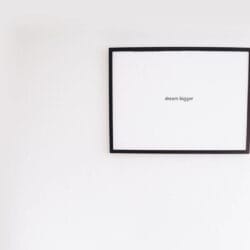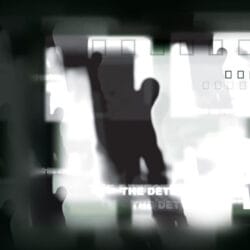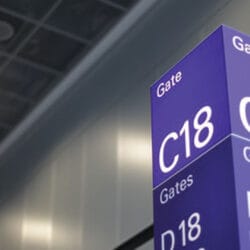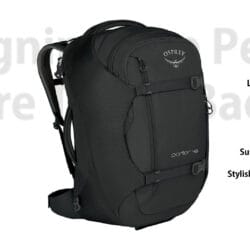Nutrition is one of the 3 foundations of good health, but we tend to waste…
Case Study for Melbourne Cafe ‘Lucky’ that brought a local community together with its ‘positive fortune’ cafe branding.
Client: Lucky Cafe Location: Melbourne, Australia Challenge: To create a brand that signifies the 'lucky' name better as a cafe you can trust and brings good fortune
This local cafe already had a great name, ‘Lucky Cafe’, but they weren’t really utilising it to the maximum effect. There was a ‘3D dice’ thrown into their logo, but their brand didn’t really correlate with the potential of their company name.
The background challenge
The Melbourne-based independent cafe was already placed in the most cosmopolitan and European-like city in Australia, around the popular Brunswick and Smith street area, but part of that charm also meant fierce competition and lots of cafes coming and going.
Melbourne is well known for its coffee, from flat whites to lattes, but to stay afloat you’d either have to be master baristas or have something else that kept customers coming back.
There was already a plentitude of baristas so the client felt that they had to stand out a different way. Their coffee was good (at least to my British taste buds), but they didn’t have a lot of room for people to sit around like other cafes, so their food sales relied more on ‘takeaway brunches’, a nice idea.
The branding experience solution/s
I worked as an in-house consultant on this leading and facilitating a local team and we started by taking the ‘takeaway brunch’ idea further to give people a feeling of ‘being lucky’ throughout their day, not just when in the cafe, but when walking past it, or when ordering from it.
I came up with the idea of using a lucky dog statue outside that gave people a story of a (fictional) dog named Lucky, who would become a lucky charm for the area (envisioning people rubbing or padding Lucky’s head or taking photos with it). Therefore the dog would have a painted scarf with the Lucky dice branding too and a collar that said his name ‘Lucky’.
Beyond that, we green-lighted an idea of ‘lucky days’ where two days a week would be seen as especially lucky, in terms of deals that could find at certain hours. The owner wanted to grab trade on Mondays (because other cafes nearby were using Monday as a day off and he wanted to capitalise), so Monday Magic was born. The idea was to use an 8-ball at the cashier desk as a kind of scratch card. If you got a ‘yes’ on the first shake of the 8-ball you would get a special discount off your order.

We later came up with Friday Fortunes too, as one day a week didn’t seem like enough to build that lucky association into people’s minds. We wanted people to feel good going into the weekend and keep us in mind.
The aim of the branding message
The client was quite old-school (which he doesn’t mind me saying) and relied more on good word-of-mouth than he did on online trade, so we felt it was even more important to deliver a good branding message that could be shared easily.
The aim was to make people associate the cafe with positive fortune. Therefore, it had to stand out from other shops on the street. The owner agreed to rebrand the exterior cafe walls to a vivid golden-yellow colour to catch attention. No other shops on that side of the street had that colour at the time.
The lucky dog idea was nice but wasn’t implemented in the end due to the thin pavements and the worry of causing too much backlog with pedestrians spilling onto the road when others were stopping around the dog.
Instead, we pushed the psychological connection of feeling better when you saw the shop. The dice logo was slightly rebranded to include a smile wrapped underneath it, and the menu and flyers were changed to reflect this too.
Extended branding throughout the cafe
One key importance was to make people feel like they would feel better after going into the cafe, so the food reflected healthier choices too, and the menu was changed to include food that had special lucky names such as ‘Kiss My Lucky Egg’ (Cool Running fans will know), ‘You Feel Lucky Punk?’, and ‘Lucky Ducky’.
The vibe wanted to be fun and friendly, but give customers a feeling of trying something new each time they passed (to build up their lucky bingo rewards card for trying different things n the menu for a special lucky treat after 10 items).
These cafe rewards cards are nothing new but the idea of being spontaneous in selection was.
The overall impact
After a month fortunes changed. The cafe had more people coming and trying their luck (I couldn’t resist).
Yet the main aim wasn’t just one-off customers, but it was to bring in more returning ones, and so when people started associating the cafe with a good vibe there became a bit of a community that would come in for brunch and chat, so we set up Wednesday Waffles. Lucky didn’t want to be a stand-off cafe, it wanted to be inclusive and friendly, where people can speak, and speak some more (whilst eating waffles!).
Locals told their friends to meet there more for brunches, but when people couldn’t they could easily order a brunch for delivery (where we would put a golden yellow ticket in one in every few hundred – yes we did take that from Charlie & The Chocolate Factory).
The measure of success for this particular owner was always in the feel-good factor, and with more people coming in and engaging with people they didn’t know at first, the more Lucky became a hub of community spirit (and all that without coffee being the prime selling point).
A Case Study From:










